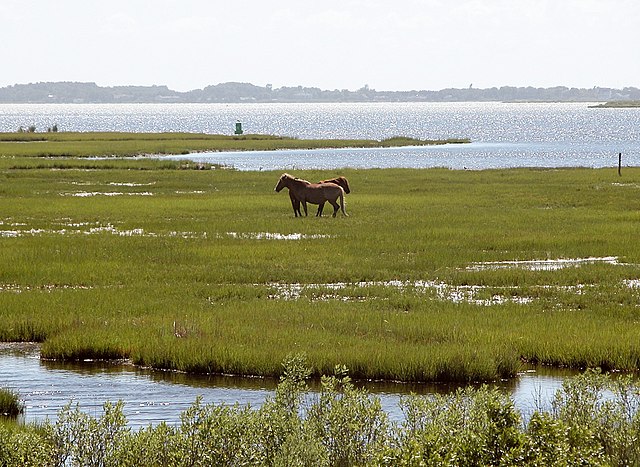The Banker horse is a breed of semi-feral or feral horse living on barrier islands in North Carolina's Outer Banks. It is small, hardy, and has a docile temperament, and is genetically related to the Carolina Marsh Tacky of South Carolina and Florida Cracker Horse breeds through their shared Colonial Spanish horse and Iberian horse descent. The current population of wild Banker horses is estimated to be about 400.
Drinking from a horse-dug water hole on Shackleford Banks
Aerial view of a barrier island in the North Carolina Outer Banks
A Banker horse on Ocracoke Island
A freeze branded mare on Shackleford
A feral horse is a free-roaming horse of domesticated stock. As such, a feral horse is not a wild animal in the sense of an animal without domesticated ancestors. However, some populations of feral horses are managed as wildlife, and these horses often are popularly called "wild" horses. Feral horses are descended from domestic horses that strayed, escaped, or were deliberately released into the wild and remained to survive and reproduce there. Away from humans, over time, these animals' patterns of behavior revert to behavior more closely resembling that of wild horses. Some horses that live in a feral state but may be occasionally handled or managed by humans, particularly if privately owned, are referred to as "semi-feral".
Feral Chincoteague ponies on Assateague Island, Virginia
Feral horses of the Namib
Feral horses in Tule Valley, Utah
Semi-feral Exmoor ponies on Porlock common, Exmoor: They are gathered each year to remove foals and assess stock.








